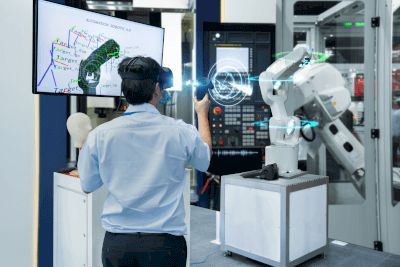What Is Operation Support?
 Operation support refers to assistance provided through actions or remote instructions to help individuals in the field. This support can involve people, as well as equipment and software.
Operation support refers to assistance provided through actions or remote instructions to help individuals in the field. This support can involve people, as well as equipment and software.
For example, operation support may occur when a skilled instructor assists an inexperienced worker on a construction site, thereby enhancing technical skills and preventing work-related accidents.
In confined environments or at high elevations, only the operator may be permitted to enter for safety reasons. In such cases, operation support can be provided remotely using wireless devices.
Operation support is also applicable to desk work involving a personal computer. For instance, a worker struggling with a document problem might receive assistance through collaborative software. In such scenarios, an editor can simultaneously edit the document with the worker and provide guidance via comments and other tools.
Introduction of Operation Support
Operation support is commonly implemented as remote support in factories, construction sites, and office environments.
About Remote Support
Remote support uses technologies like video, audio, and AR imagery. This method employs various devices and software connected to the internet, facilitating multi-person operations.
It has diverse applications across various industries. However, network equipment, smartphones, and tablets are required to establish connectivity. Smooth remote support is achievable by integrating network cameras, wearable cameras, smart glasses, AR glasses, and MR glasses with these devices.
The features of each are outlined below.
1. Network Camera
Network cameras, each with a unique IP address, can connect to the internet independently. They allow remote observation and zoom functionality.
2. Wearable Camera
Wearable cameras are compact and can be attached to the head or clothing. These cameras provide live image sharing in real-time, and some models include built-in audio communication devices.
3. Smart Glasses, AR Glasses
These devices, resembling glasses or sunglasses, become slightly bulkier with added functions, akin to hats or sun visors. The display screen is positioned on either the left or right side, overlaying digital information onto the real world. They also feature audio and recording capabilities, as well as AR technology. Generally, smart glasses do not support displaying 3D CGI objects in real space.
Use of Operation Support
Operation support plays a significant role in the medical field, particularly in the context of the coronavirus pandemic, where minimizing infection risk is crucial.
With the advent of 5G in 2020 and advancements in the Internet of Things (IoT), operation support technologies have become more sophisticated and widespread. This progress has enabled remote medical consultations and treatments.
The high-capacity, high-speed transmission capabilities of 5G allow for the efficient transmission of images and sounds, such as from a digital stethoscope to tertiary medical centers. Moreover, recent developments in remote support include pilot projects in neurosurgery, where multiple devices in an operating room are networked. This setup integrates and displays patient biometric data and surgical progress on a single monitor, facilitating remote collaboration between primary surgeons and specialists.